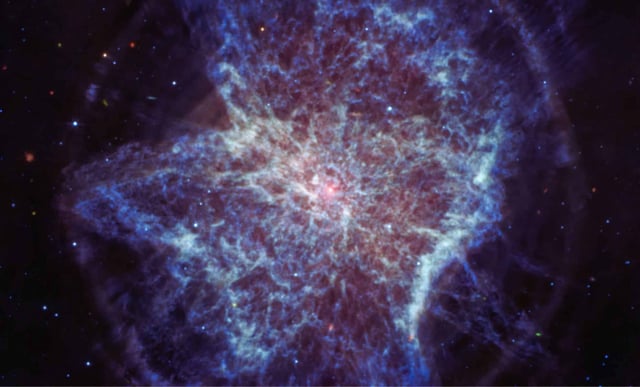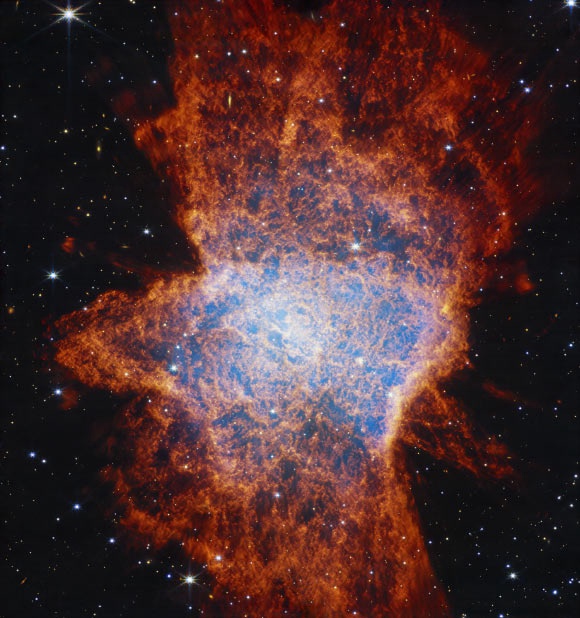Overview
- Combined MIRI and NIRCam exposures totaling nearly 100 hours have produced the deepest infrared image of the Hubble Ultra Deep Field, uncovering around 2,500 faint galaxies from the universe’s first billion years.
- Webb’s mid-infrared view of planetary nebula NGC 6072 reveals concentric rings at roughly 3,300 light-years in Scorpius that are likely carved by a hidden companion star.
- Near-infrared imaging exposes multipolar outflows streaming from the white dwarf core, providing high-resolution support for models in which binary interactions shape nebula morphology.
- These findings reinforce ESA’s 2021 Gaia study identifying NGC 6072 as a binary candidate and demonstrate Webb’s capacity to probe both stellar evolution and cosmic dawn.
- Late 2025 MIDIS visits will target additional wavelengths to extend the deep field survey and improve models of early galaxy formation and stellar death processes.

